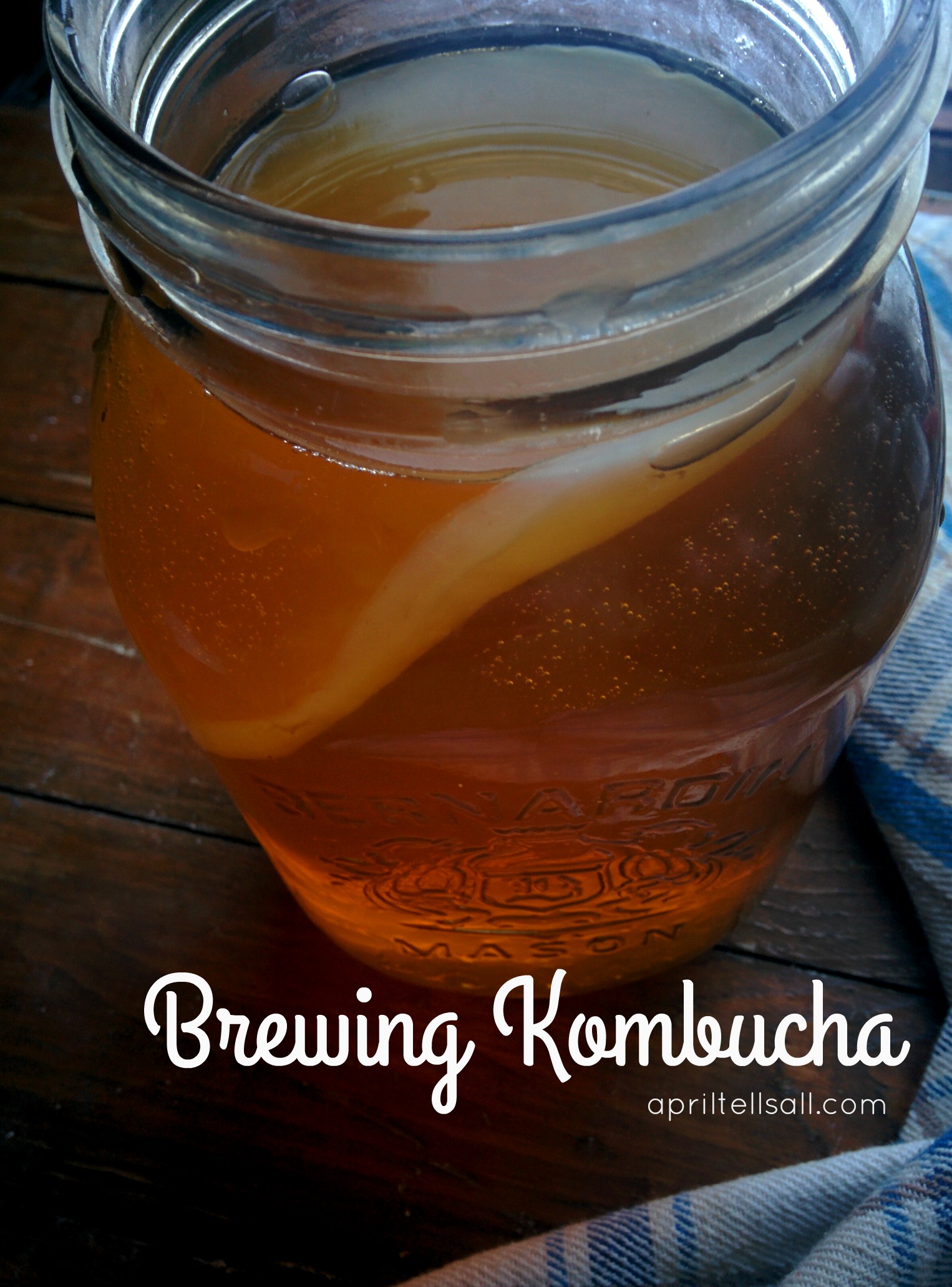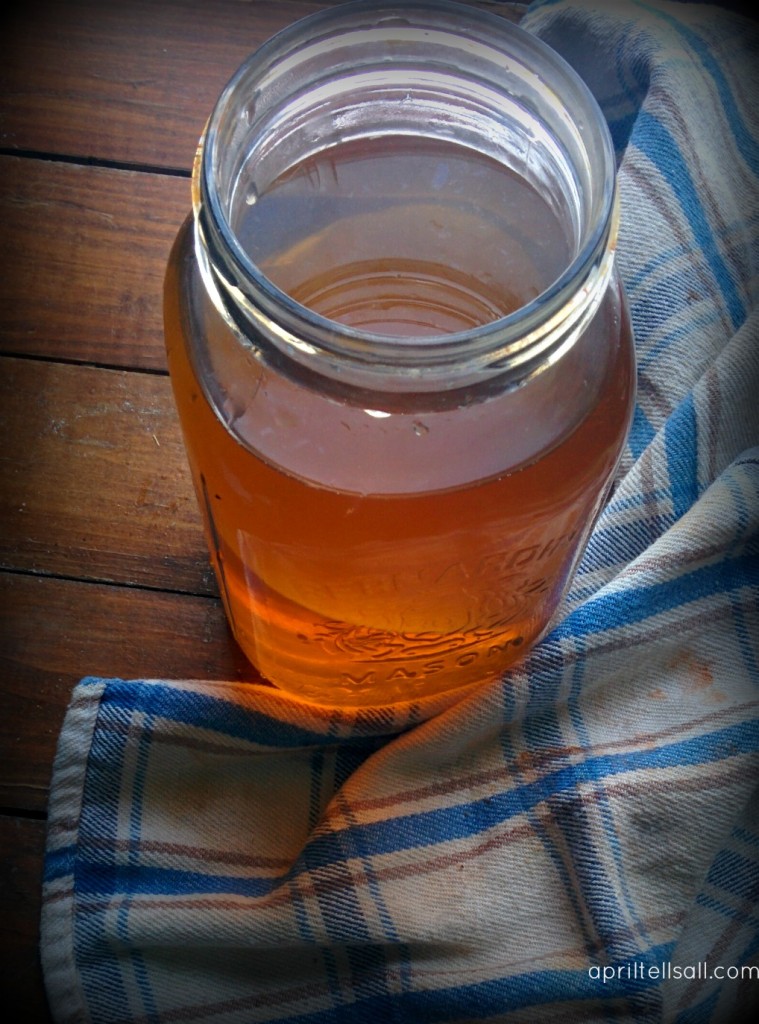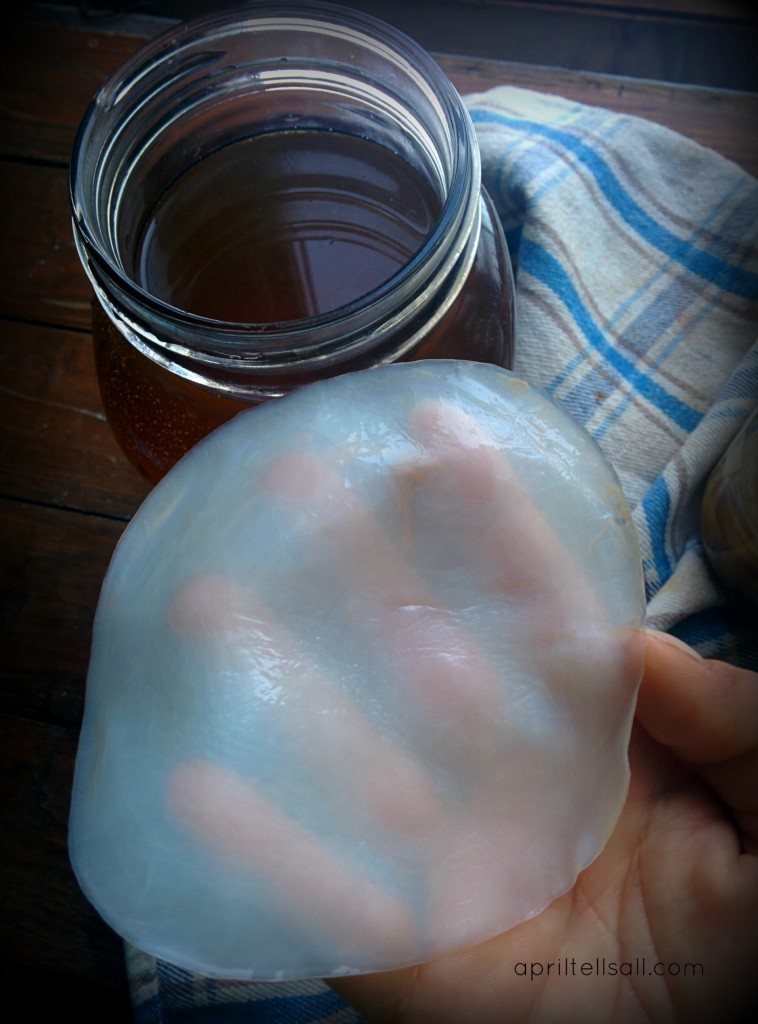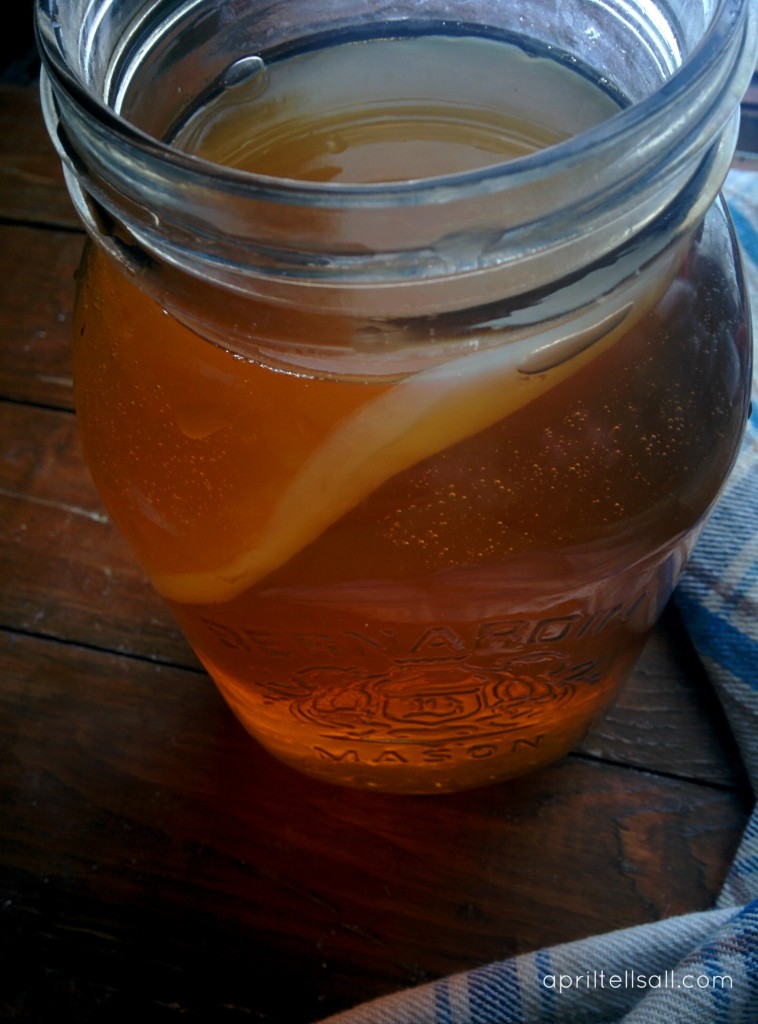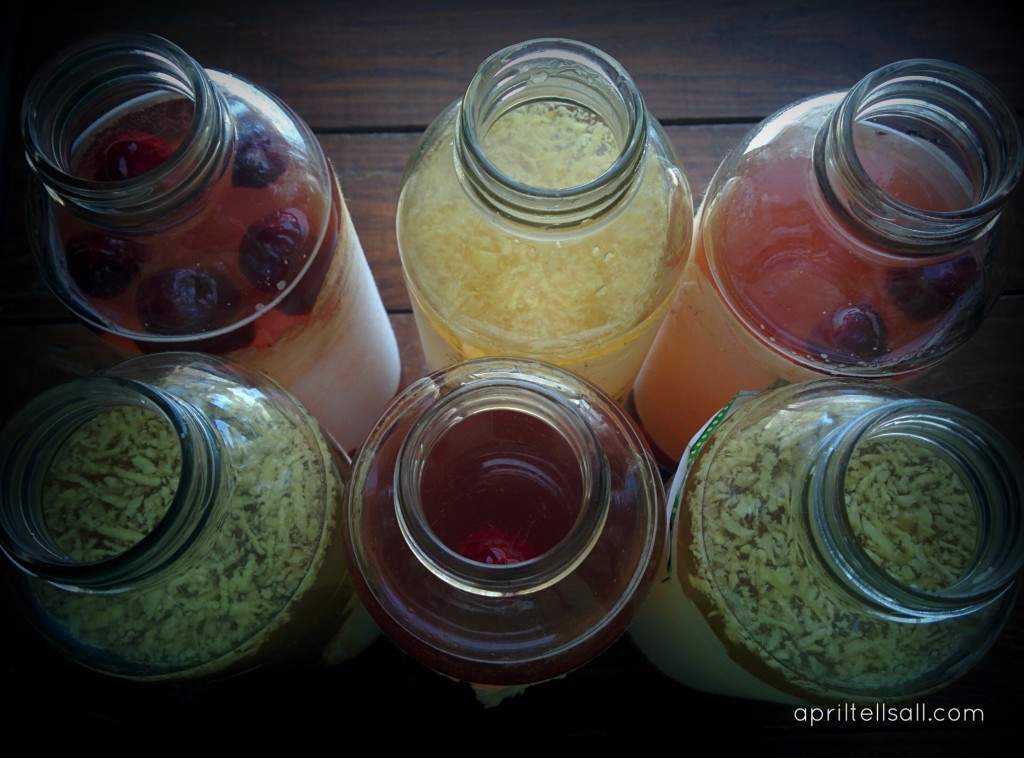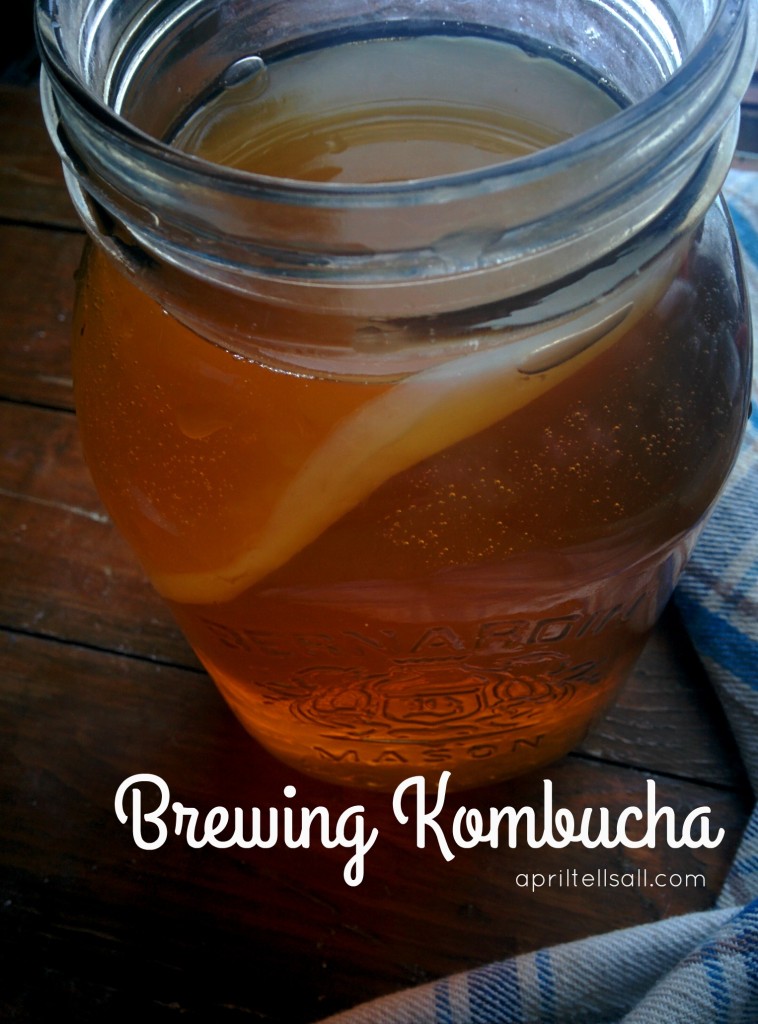Oh hello world. Do you remember me? I’ve just been dying from the flu for the past week. No big deal. And while my head still feels fuzzy and my chest is still full of nasty stuff, and I’m still coughing like a smoker it was time to do something. Because laying around on the verge of death for a week is not my style. And also because my restless leg syndrome has kicked up an excruciating notch because of the inactivity. Girlfriend has to move or her legs are going to die a slow and painful death.
So alas here I am. Somewhat alive.
I got a batch of english muffins soaking on the counter, and I’ve been trying to decide if I want to start another sourdough starter after my last one died of…ahem, starvation.
But today, as a request from my seester, we’re talking about kombucha.
I’ve been a booch drinker for almost a year now. I love love LOVE the stuff. However, here in the great white north, it is a little hard to come by (in these parts a good grocery store is hard to come by), and when you do come by it the price is painful. Enter homemade kombucha.
The great thing about booch is you pretty much ignore it for the majority of the time. Don’t you just love when you get to ignore things and it still turns into wonderful healthy food, or in this case drink? I do.
The hardest part of booch is acquiring a SCOBY. And it took me months to realize that it isn’t pronounced “scooby”. You say the o like it sounds. sc-O-by.
What is this scoby you ask? It is the magic, baby. That beautiful scoby is what is going to turn your sweet tea into probiotic heaven.
……
Well ok. Maybe beautiful was pushing it. There are several words that could be used for describing a scoby and beautiful isn’t one. It is gelatinous and resembles something from a sci-fi flick.
But I digress.
Scoby stands for symbiotic culture of bacteria and yeast. When you add it to sweet tea it “eats” the sugars and leaves behind healthy bacteria in the tea (since it is itself a healthy bacteria). You can order them online, or if you know someone who brews kombucha they are bound to have an extra. The thing with scobys is once you get one, you’ll never be without. Every time you brew a batch of booch you get a new scoby. If you don’t want to order one online and don’t have a kombucha brewing friend nearby you can grow your own. Which is how I got my hands on one.
The only brand that still works for growing your own scoby is GT’s (according to my research and personal experience).
Once you have a scoby you can start brewing.
(This scoby is still young. As they get older they get thicker and a little more yellow)
Brewing Kombucha
You Will Need
1 scoby
1 gallon sized jar or bucket (preferably glass, no metal!)
1 gallon of water
1 cup of sugar (Always use sugar! Honey is antibacterial which kind of goes against what we’re trying to do. I use organic cane sugar)
8 bags of black, green, or white tea (teas that are a no no are earl grey varieties or herbal teas)
2 cups of starter liquid (this is premade kombucha. You can save some from your last batch or use store bought if you’re just starting out)
Directions:
Bring your water to a boil.
Remove from heat and stir in sugar.
Add in tea bags.
Let the tea steep until the water is room temperature. You don’t want to shock your scoby, so make sure it is the same temperature (this can take overnight).
Once cooled, remove tea bags.
Add starter liquid to the tea, then pour the tea into the jar you’re going to brew in.
Add the scoby.
Cover with a towel or coffee filter and let sit for about a week. You can check on it after several days and see if it’s at your taste level. The longer it brews the more vinegary it will taste. This is known as the first ferment.
Just a note about fruit flies. They LOVE kombucha! If you don’t want them getting in and laying eggs in your scoby be sure the covering is held down very tightly with an elastic.
Once the booch is to your liking it is time to bottle it. Be sure to save 2 cups of the finished kombucha so you can start another batch. Remove the scoby and pour the liquid into clean bottles. You can use whatever bottles you happen to have hanging around: mason jars, or old kombucha bottles. Basically anything that you can get the lid nice and tight on. Back when I was just buying kombucha I knew that I would want to brew my own eventually so I saved every kombucha bottle I ever bought. This has worked well for me and they are super easy to run through the dishwasher.
The second ferment is optional as you can drink the kombucha plain. If you want to flavor it and try to get some carbonation out of it this is the time to do so.
To create flavors you can add fresh fruit, fruit juice, herbs, spices, or maple syrup (I’m Canadian, we put maple syrup on everything, eh) to the bottles. Just add what flavoring you want and put the lid on the bottle nice and tight. Allow to sit on the counter for several days (I usually let it sit for 3 days) and then put it in the fridge to be enjoyed at will.
[wp_ad_camp_1]
That’s kombucha! If you ever decide you want to take a break you can refrigerate your scoby with the starter liquid and a cup of sweet tea to slow it down.
Extra scobys can be all saved in the “scoby hotel”. This is a jar that is just filled with extra scobys and a little fresh sweet tea each time you add a scoby. If you ever have a batch go moldy (it happens) be sure to throw everything away, even the scoby. That’s why it is nice to have extras so you can just grab a new one and start again. I cut up extra ones and feed them to my chickens and goats as well. It’s a nice little probiotic boost for them.
I won’t get into all the health claims. To be honest I drink it in place of soda. It’s nice to have a change from water every once and awhile and the fact that it is full of gut loving probitotics is an added bonus.
And now I’m back to dying on the couch. Thanks for reading during this brief interruption of sick April.
The end.
Shared with Mostly Homemade Mondays, Our Simple Homestead Blog Hop and Homestead Blog Hop

